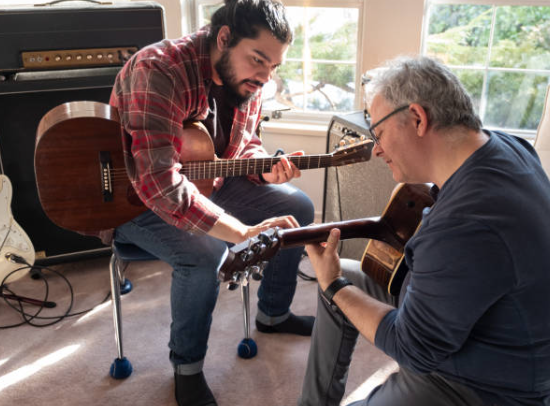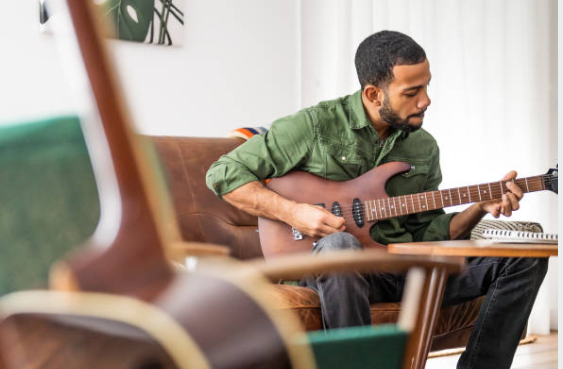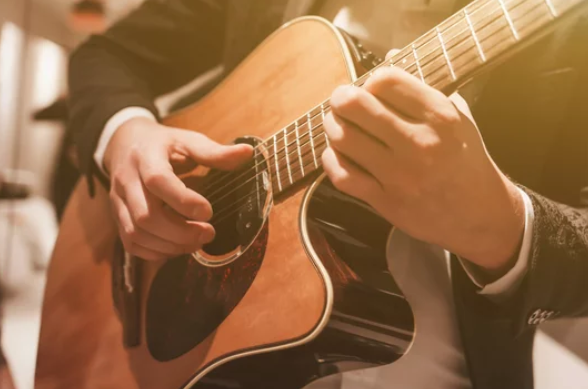What You Need To Know About Rhythm and Meter – Easy !
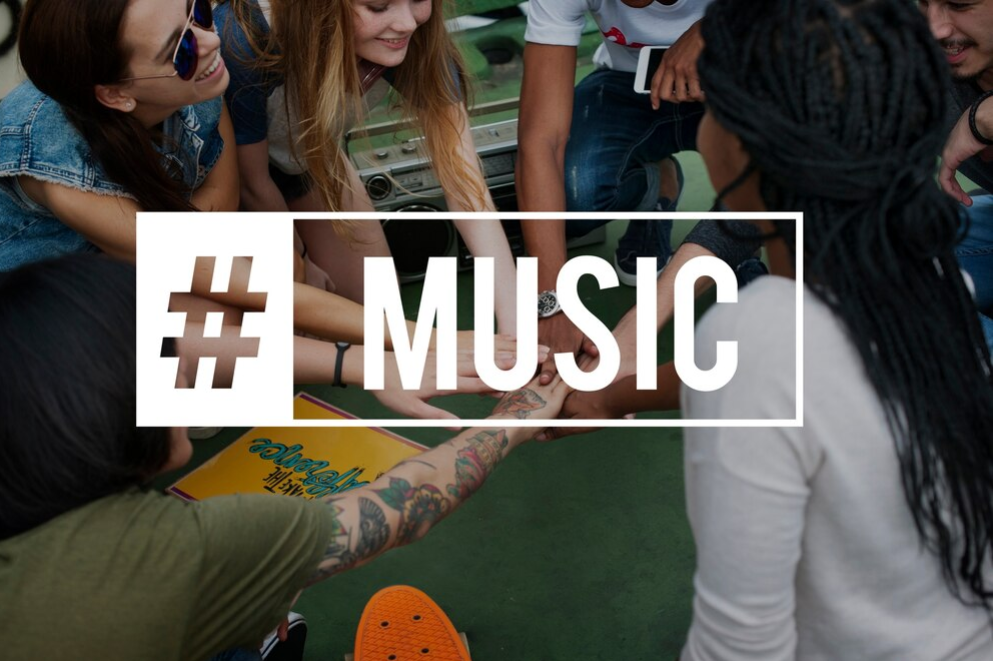
When it comes to music, rhythm is a key element that dictates the flow and feel of a piece. Whether you’re a budding musician or an experienced player looking to refine your skills, grasping the concept of rhythm is crucial. In this blog, we’ll explore the basics of rhythm, meter, and time signatures, and provide practical exercises to help you get comfortable with these essential elements of music.
What Is Rhythm?
At its core, rhythm is the pattern of beats, or pulses, over time in a piece of music. Rhythm helps us organize and perceive time through a combination of notes and rests (or silences). Imagine rhythm as the heart of music—it’s what keeps the entire composition moving forward. You can find rhythm in vocals, percussion, and instrumental parts, as it’s the structure upon which everything else builds.
Rhythm consists of several components:
- Beat: The steady pulse or heartbeat of the music.
- Meter: The specific arrangement of strong and weak beats in a pattern.
- Time Signature: Indicates how many beats are in each measure and which type of note receives one beat.
- Tempo (BPM): The speed at which the music is played.
- Strong and Weak Beats: Strong beats often fall on the downbeats, while weak beats fall on the offbeats.
- Syncopation: A technique where rhythms emphasize offbeats.
- Accents: The emphasis or intensity on certain notes.
These components combine to form a cohesive rhythm that drives a piece of music forward, making it both dynamic and engaging.
Understanding Note Values
Before we dive deeper into rhythm, it’s important to familiarize yourself with note values. These values tell you how long a note should be played, which is vital in creating rhythmic patterns.
- Whole Note (𝅝): Lasts for four beats. Picture it as an open circle.
- Half Note (𝅗𝅥): Lasts for two beats. It looks like an open circle with a stem.
- Quarter Note (𝅘𝅥): Lasts for one beat. It’s a filled-in circle with a stem.
- Eighth Note (𝅘𝅥𝅮): Lasts for half a beat. It has a filled-in circle, a stem, and a flag.
- Sixteenth Note (𝅘𝅥𝅯): Lasts for a quarter of a beat. It has two flags on its stem.
Each note also has a corresponding rest, which indicates a period of silence for the same length as the note. Understanding note values and their corresponding rests will help you read and play rhythms accurately.

Rests and Their Values
- Whole Rest (𝄻): Four beats of silence.
- Half Rest (𝄼): Two beats of silence.
- Quarter Rest (𝄽): One beat of silence.
- Eighth Rest (𝄾): Half a beat of silence.
- Sixteenth Rest (𝄿): A quarter of a beat of silence.
Rests are just as important as notes because they create space, adding balance and texture to music.
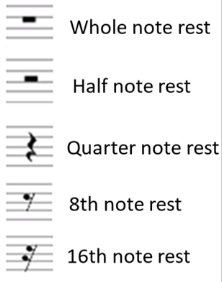
What is a Meter?
A meter is the regular pattern of beats in a musical piece. It arranges the rhythm into measures or bars, providing a framework that helps musicians grasp the structure of the composition.
What Are Time Signatures?
Time signatures give structure to a piece by indicating how many beats are in each measure and which note value gets one beat. This is essential for understanding the overall rhythm of a piece.
A time signature is typically written as a fraction (e.g., 4/4, 3/4, 2/4), where:
- The top number tells you how many beats are in each measure.
- The bottom number tells you which note value gets one beat (e.g., 4 = quarter note).
Here are some common time signatures:
- 4/4 Time Signature (Common Time): Four beats per measure, and the quarter note gets one beat.
- 3/4 Time Signature: Three beats per measure, with the quarter note receiving one beat.
- 2/4 Time Signature: Two beats per measure, with the quarter note receiving one beat.
These time signatures help musicians understand how to divide and play rhythms within a given measure.
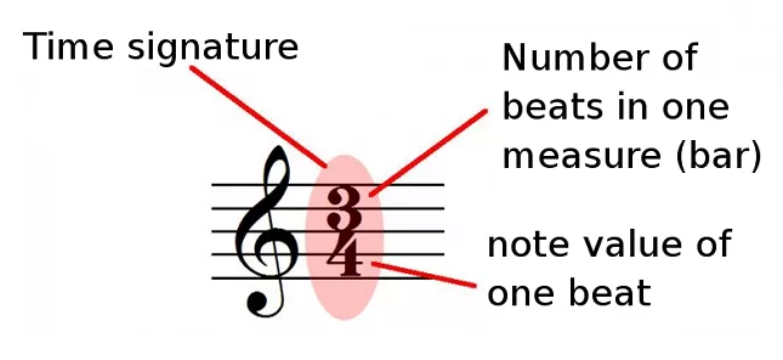
Practical Exercises to Internalize Rhythm
Now that you know the theory, it’s time to practice! These simple rhythmic exercises will help you get comfortable with note values, time signatures, and the overall feel of different rhythms.
Exercise 1: 4/4 Time
Clap or tap along with these rhythms in 4/4 time:
- 1 2 3 4 (Quarter notes)
- 1-2 3-4 (Half notes)
- 1-2-3-4 (Whole note)
Exercise 2: 3/4 Time
This exercise helps you feel the three-beat pulse:
- 1 2 3 (Quarter notes)
- 1-2 3 (Half note, quarter note)
- 1-2-3 (Whole note)
Exercise 3: 2/4 Time
In 2/4 time, you’ll focus on two beats per measure:
- 1 2 (Quarter notes)
- 1-2 (Half note)
Repeat these exercises until you feel confident with the rhythms. They’ll help you develop a solid sense of timing, which is essential for playing music accurately.
Final Thoughts
Understanding rhythm, note values, rests, and time signatures is fundamental to mastering music. These concepts provide the framework for reading, playing, and creating music, no matter the instrument or genre. By practicing rhythmic exercises, you’ll develop a deeper sense of timing, which will improve your musical skills across the board.
Keep practicing these rhythms, and soon enough, you’ll be able to read and play more complex pieces with ease. Happy playing!
If you’re interested in learning an instrument, at Real Brave, we offer an incredible experience like no other place in music lessons for kids and adults by guiding them from the beginning stages of getting to know an instrument all the way through performing for family and friends on stage. Our instructors come from all over the world, bringing extensive experience on a wide range of instruments. Click below and book a free lesson with us!
Author: Daniel Powers Jr, the founder of Real Brave™, serves as the chief inspiration to thousands of students in the Real Brave music instruction program. He’s also the visionary behind PracticePad™, an online platform for live one-on-one online music lessons, lesson tracking, and scheduling. Beyond his entrepreneurial pursuits, Daniel leads a non-profit organization that provides formerly homeless children with access to music education, making a profound impact on their lives. His unwavering dedication to music, innovation, and education continues to inspire individuals to reach their fullest potential while creating positive change in communities. Follow Real Brave on all the socials:
youtube.com/@realbraveinc
twitter.com/realbraveinc
https://www.tiktok.com/@realbraveinc
instagram.com/realbraveaudio
facebook.com/realbraveinc


